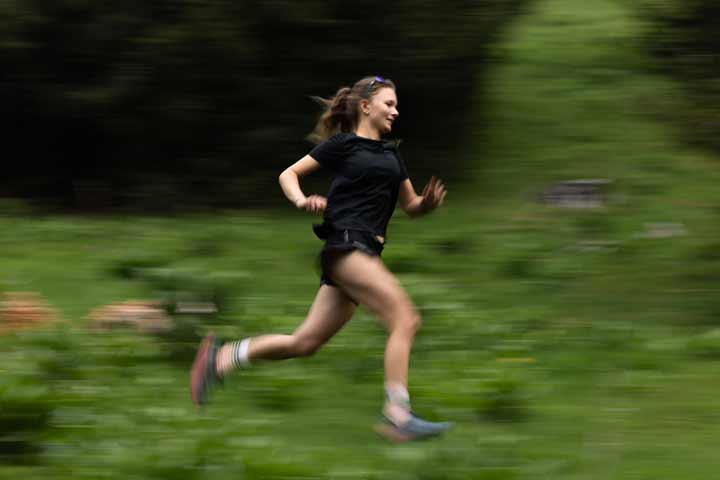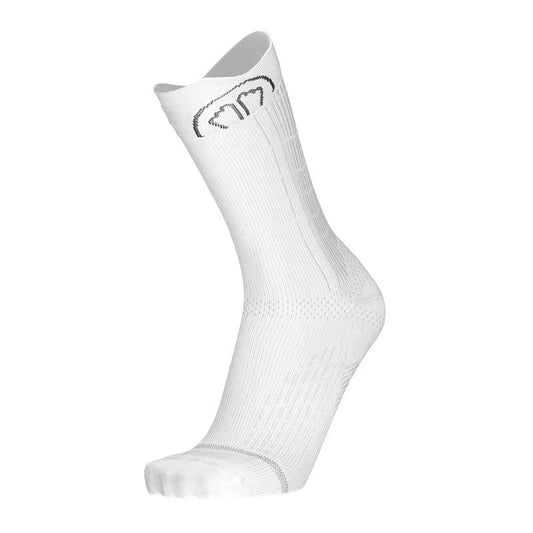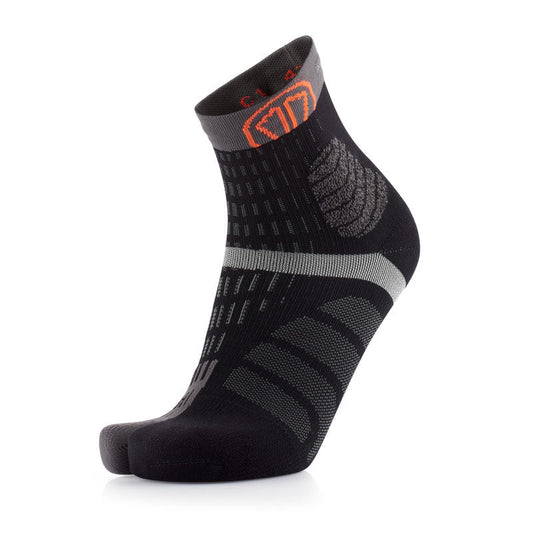How to choose the right size running shoes?


Choosing the right size running shoes is a real headache. The number of runners who feel uncomfortable in their trainers is staggering. Sometimes too big, often too small, running shoes are rarely the right size and, as a result, your feet suffer! As the kilometres pile up, discomfort – pain, black toenails, blisters, rubbing and lack of stability – appears and multiplies. That's why at Sidas, with nearly 50 years of expertise in foot comfort for athletes, we felt it was essential to write this educational article to provide you with clear guidance on purchasing your next pair of trainers.
How do I know if my shoes are the right size? What advice can I follow to make sure I choose the right size? Why should I go to a specialist running shop? How can I incorporate the foot analysis innovations developed by Sidas into my choice? You will find all the answers to these crucial questions in the toolbox below!
‘Sometimes too big, often too small, running shoes are rarely the right size and, as a result, your feet suffer!’
To determine if your running trainers are the right size, there are several tell-tale signs you can look out for!
First of all, the right size should not cause any discomfort! At Sidas, our mission is to provide you with such comfort that you forget about your feet and can focus fully on the present moment. On the contrary, if you suffer from rubbing, black toenails, blisters or pain due to pressure points, then it is very likely that you will need to change your pair soon.
Secondly, a trainer in the right size gives you a safety margin – also known as “comfort space” – at the front of the foot. This is designed to prevent your toenails from repeatedly hitting the shoe.
Finally, the heel must be perfectly supported to ensure maximum precision when you put your weight on your feet and optimal stability.
In short, your foot should not float or feel too cramped. All these elements combined – whether concrete or sensory – allow you to be sure that the shoes you lace up before setting off on your trail run or road jog are neither too small nor too large.
‘In short, your foot should not float or feel too cramped.’
‘Is it a problem to go down a size?’ The answer is yes! ‘Should your foot touch the front of the shoe?’ " The answer is no!
These are questions that come up regularly in the running shops we work with*. Their advice is invaluable, which is why we believe that the first and most important mistake to avoid is buying your trainers online, without the advice of a specialist and without trying them on first.
The second mistake to avoid is choosing the same size as your everyday shoes. Your feet swell during exercise – we'll come back to this later – and therefore need more space. There are also subtleties, not to say inconsistencies, in size correspondences. In other words, a size 41 in a specific model from a particular brand does not necessarily correspond to a size 41 in another model from a competing brand. In short, measure your feet! They change with age and with exercise, so measuring them frequently allows you to keep your measurements up to date.
Finally, the third mistake we see every day is focusing on foot length while neglecting width. This often leads to uncomfortable pressure points on the metatarsals, rubbing and even blisters.
*Find our nearest partner store using the Store Locator.
‘The first and most important mistake to avoid is buying trainers online without getting advice from a specialist and without trying them on first.’
1/ Our first piece of advice – and we could stop there, as all the following tips would then apply – is to visit a specialist. Running shops have the expertise, experience and digital tools – such as the FeetBox – to accurately analyse the specific characteristics of your feet and help you choose the right shoes.
2/ Measure your feet in millimetres, so that the calculated length is based on a universal scale. Ideally, this measurement should be taken at the end of the day, or after sporting activity, when your feet are naturally swollen.
3/ Keep in mind that shoe sizes – unlike measurements in millimetres – are not standardised and differ depending on the manufacturer and model. A size 41 on model A does not necessarily have the same length as a size 41 on model B.
4/ Consider your foot as a whole. In other words, don't base your choice of shoe solely on its length, but also on its width and how it fits. An analysis using our FeetBox allows you to identify all these parameters, including pressure points.
5/ Allow for comfort space. The right size is: the length of your foot plus a comfort space of 13 mm, which is always taken into account, and possibly an extra safety space of 5 to 10 mm, designed to anticipate the fact that the foot changes with effort as the kilometres go by.
6/ Don't give in to marketing hype. Just because you find a shoe attractive or because it is worn by an athlete who inspires you does not mean it is right for you! Your running trainers should be chosen by your feet, not your eyes or your heart.
7/ Test the model you prefer. Even if the truth will only become apparent after several kilometres, a few strides in the shop will already allow you to identify any unacceptable pressure points.
8/ Adapt your purchase to your practice. If you do trail running, for example, the safety space at the front of the foot should be slightly larger. If you run competitively on roads, you will probably be looking for a more precise fit. Finally, if you only jog occasionally, comfort and cushioning will guide your selection.
9/ Come to the shop wearing your running socks, ideally thin, light and technical, to put your feet in the best possible condition.
10/ If you wear orthopaedic or podiatric insoles, bring them with you when you make your purchase. If you want to boost the comfort, responsiveness and cushioning of your shoes, consider Sidas insoles, but only once you have chosen your trainers.
‘Don't give in to marketing hype. Your running trainers should be chosen by your feet, not your eyes or your heart.’
At Sidas, we felt it was essential to focus on this specific point because this question comes up very – too – regularly. The answer is simple: you need to allow for comfort space in your running shoes because your feet change during physical activity. As you run, your feet swell and lengthen, which is why they take up more space in your trainers. This phenomenon is even more pronounced when trail running or over longer distances.
Manufacturers therefore systematically allow for 13 mm of comfort space, to which an additional 5 to 10 mm of safety space may be added.
"As you run, your feet swell and lengthen, which is why they take up more space in your trainers. "
There is a commonly accepted phenomenon: while the length of shoes is relatively standardised, their width is a real grey area. The fit of different models depends on the philosophy of each brand. This makes buying running trainers relatively complex for runners with wide feet.
Here are 3 tips for choosing your running shoes if you have wide feet:
Visiting our partner shops gives you the opportunity to benefit from our FeetBox, an ultra-innovative tool that provides an extremely comprehensive and accurate analysis of your foot. Its mission? "To be the Tinder of the foot! ‘ In other words, to develop such a thorough understanding of your foot – its length, width and dynamic behaviour – that we can choose the most suitable running shoe for you from our entire database.
’Be the Tinder for feet!"







